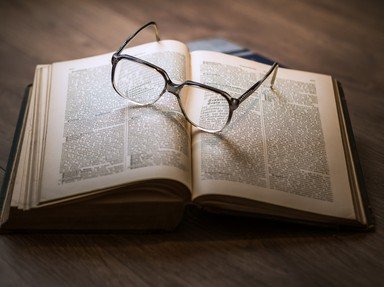Quiz Answer Key and Fun Facts
1. A narrative in verse form, often set to music
2. A mocking, comedic work (occasionally bawdy)
3. A written account detailing another person's life
4. An abrupt shift from a serious tone to a nonserious or comical one
5. A poetic style that embraces free flow over traditional forms
6. A genre of novels featuring coming-of-age stories
7. A flawed character, often set up as mysterious and sympathetic
8. Writing that is inflated in its importance
9. A list of academic sources found at the end of a work
10. Writing meant for aesthetic, rather than practical, purposes
Source: Author
trident
This quiz was reviewed by FunTrivia editor
LeoDaVinci before going online.
Any errors found in FunTrivia content are routinely corrected through our feedback system.
